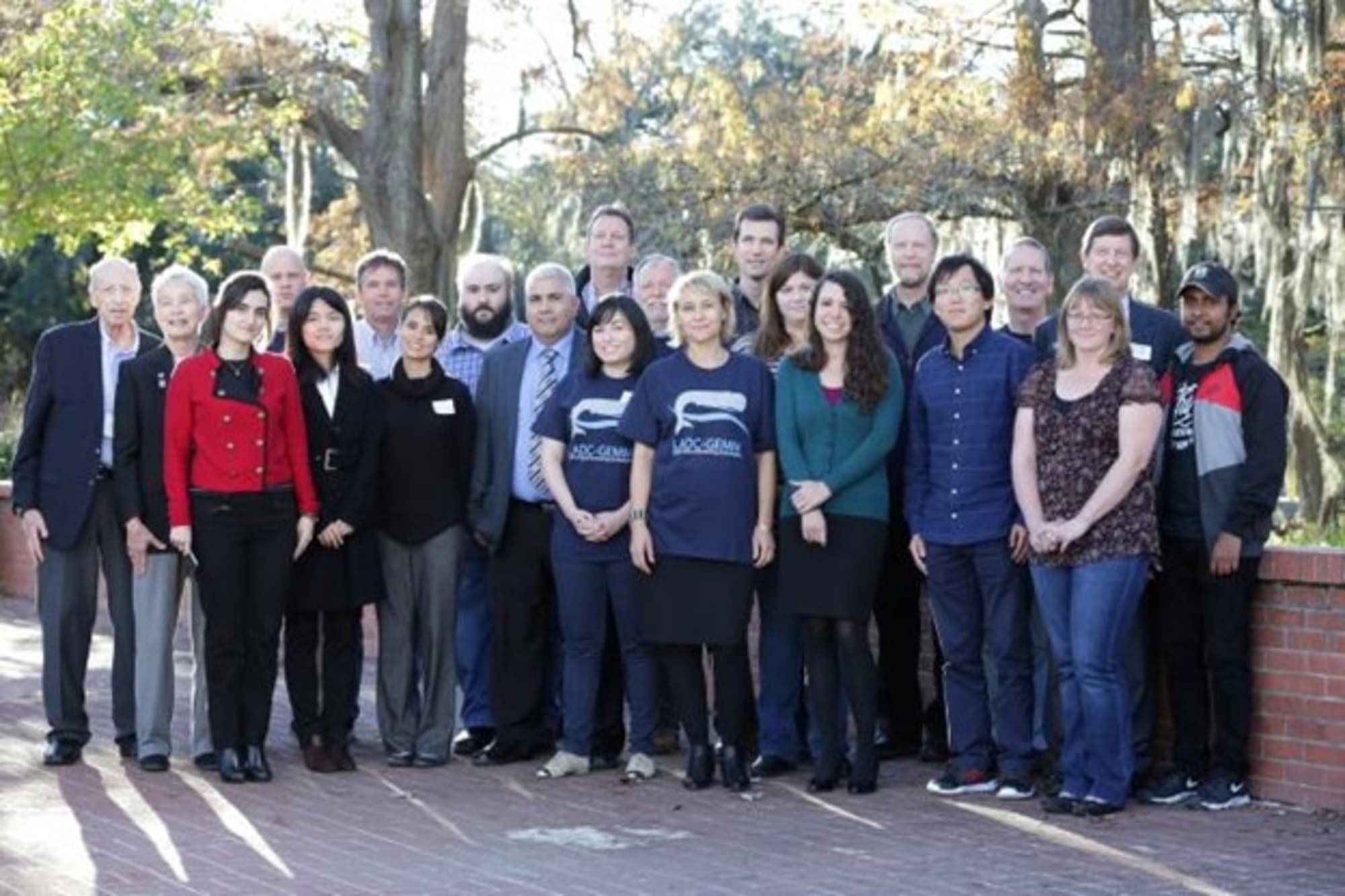
LADC-GEMM All Hands Meeting a Whale of a Time!

The Littoral Acoustic Demonstration Center-Gulf Ecological Monitoring and Modeling (LADC-GEMM) All Hands Meeting was held December 3rd-4th, 2015 in Lafayette, Louisiana. The LADC-GEMM consortium includes members from the University of Louisiana at Lafayette, the University of New Orleans, the University of Southern Mississippi (USM), Oregon State University, and several small business partners (Proteus Technologies, ASV, Seiche, R2Sonic) and is funded by the Gulf of Mexico Research Initiative (GoMRI). Participants met to discuss first year accomplishments, future research, data management, and outreach activities of their exciting marine mammal acoustics research. The Gulf of Mexico Research Initiative Information and Data Cooperative (GRIIDC) was invited to attend the meeting to answer questions about the data submittal process to the newly formed consortium.
First year data collection was comprehensively discussed at the meeting, specifically the three passive acoustic monitoring (PAM) platforms used to detect marine mammal sounds: bottom-moored Environmental Acoustic Recording System (EARS) buoys, deep-diving sea gliders, and autonomous surface vehicles (ASVs). In June, the consortium deployed five moorings with two EARS buoys each at three locations 9, 25, and 50 miles away from the oil spill site. The first flight of the PAM glider, lovingly named Otis, was a devastating loss for LADC-GEMM. After an attempted recovery by USM colleagues, Otis was believed to have hit a propeller and was not seen again. The team had better luck with the flight of the second glider named Clyde which was deployed in October through collaboration with Portland State University.
Each PAM platform presents its own advantages and challenges. Issues with deployment, recordings, calibrations, data storage, and processing flows must be carefully addressed. Currently, LADC-GEMM is working on advancing the EARS technology to communicate and receive data from deep ocean in real time. This requires determination of frequency band standardizations to best detect different marine mammal species phonations. New signal processing algorithms must also be designed to transfer the most critical information to the surface in real time as these EARS buoys can record about 200,000 data samples each second.
Acoustic data also presents challenges for archival as data volumes are often large (tens to hundreds of terabytes from a single experiment) and there are many stages of quality control and processing. GRIIDC has consulted with multiple partners, including LADC-GEMM, the Center for the Integrated Modeling and Analysis of Gulf Ecosystems (C-IMAGE), and the National Center for Environmental Information (NCEI) to determine how data can be organized to facilitate submission to GRIIDC. The strategy for acoustic data is to partition datasets based on the stages of processing. For example, early post acquisition data such as track lines and sonar buoy locations, detection events, and interpreted data will be submitted directly to GRIIDC as they are useable and manageable in size. LADC-GEMM is GoMRI’s first acoustic-centric data consortium and GRIIDC will continue to work closely with them to help with the data sharing process.
LADC-GEMM’s first year was quite a successful one. The consortium concurrently operated three PAM platforms at three sites. These data will be compared with previously collected data at the same sites before the oil spill in 2007 and after the spill in 2010 to determine the long-term recovery of deep diving marine mammals. ASVs real time acoustic observations using towed arrays were able to detect sperm whales and dolphins during the summer cruise and data mining continues for exciting and rare recordings of beaked whales, Bryde’s whales, kogias, and orcas in the Gulf of Mexico. We look forward to seeing what new research and datasets LADC-GEMM will bring in 2016!